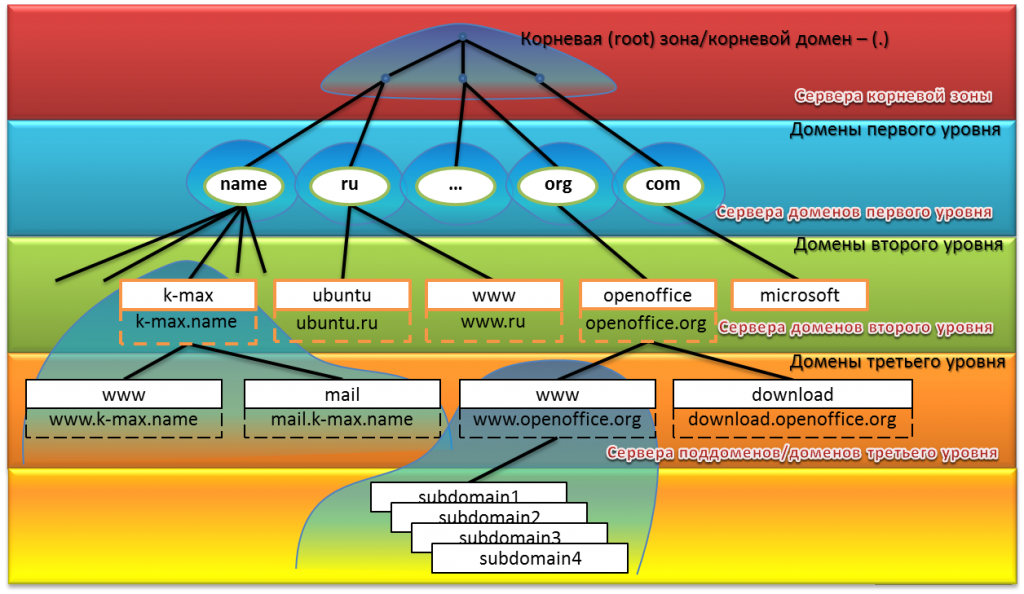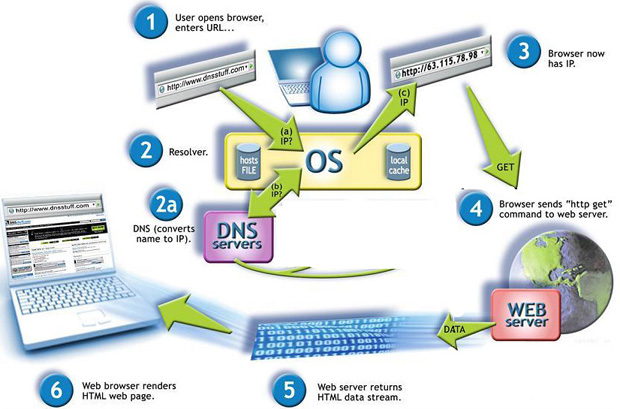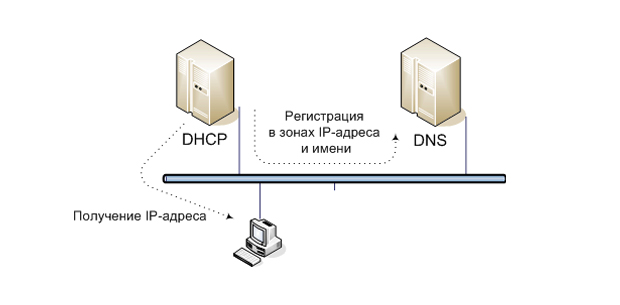Вы никогда не интересовались вопросом, где находится главный сервер интернета, альфа хостинг? Или, кто является хозяином интернета? Сейчас, наверное, большинство читателей рассмеется и скажет, что никакого хозяина у интернета быть не может, так как интернет — это просто объединение множества компьютеров и других сетевых устройств.
Просто, да не совсем просто. В каком-то смысле, хозяева у интернета есть. Ведь все это объединение компьютеров — это не просто бесформенный муравейник; на самом деле, интернет имеет жесткую иерархическую структуру, наличие которой и позволяет вам легко связываться с компьютерами, находящимися на другом конце земного шара. Кто же эти «хозяева»? Как получается, что интернет выполняет свои задачи? Что нужно сделать, чтобы парализовать работу интернета? Этим темам и посвящена сегодняшняя статья.
IP-адреса
Одной из важнейших организаций в интернете является IANA — Internet Assigned Numbers Authority — «Администрация адресного пространства Интернет». Эта некоммерческая американская организация занимается раздачей IP-адресов. Ваше интернет-соединение осуществляется через один из IP-адресов вашей подсети, так называемый шлюз. И если на этот шлюз придут данные из локальной сети с адреса, не попадающего в описанную на шлюзе подсеть, то он просто проигнорирует такой пакет.
Доменные имена

Если DNS-сервер посетителя интернета не знает, как разрешить доменное имя (например, webakula.ua), то он обратится не к кому-либо, а к доменному серверу, отвечающему за зону ua. А откуда он возьмет его адрес, если он его не знает заранее? А для этого он обратится к одному из 13 так называемых корневых DNS серверов. А вот их адреса уже постоянны и прописаны во всех операционных системах.


В дело хранения информации о доменных именах включился Google. Он хоть и не распределяет доменные имена, но хранит информацию о всех имеющихся. Адрес DNS Google очень просто запомнить: 8.8.8.8 и 8.8.4.4.
Крайне важно размещать сайт на качественном и отказоустойчивом хостинге.
-
-
September 21 2014, 21:56
- IT
- Cancel
Где находится главный сервер интернета?
Оригинал взят у 
Вы никогда не интересовались вопросом, где находится главный сервер интернета? Или, кто является хозяином интернета? Сейчас, наверное, большинство читателей рассмеется и скажет, что никакого хозяина у интернета быть не может, так как интернет — это просто объединение множества компьютеров и других сетевых устройств.
Просто, да не совсем просто. В каком-то смысле, хозяева у интернета есть. Ведь все это объединение компьютеров — это не просто бесформенный
муравейник; на самом деле, интернет имеет жесткую иерархическую структуру, наличие которой и позволяет вам легко связываться с компьютерами,
находящимися на другом конце земного шара. Кто же эти «хозяева»? Как получается, что интернет выполняет свои задачи? Что нужно сделать,
чтобы парализовать работу интернета? Этим темам и посвящена сегодняшняя статья.
IP-адреса
Одной из важнейших организаций в интернете является IANA — Internet Assigned Numbers Authority — «Администрация адресного пространства
Интернет». Эта некоммерческая американская организация занимается раздачей IP-адресов
Ваше интернет-соединение осуществляется через один из IP-адресов вашей подсети, так называемый шлюз. И если на этот шлюз придут данные из локальной сети с адреса, не попадающего в описанную на шлюзе подсеть, то он просто проигнорирует такой пакет.
Доменные имена
Но IP-адресами дело не заканчивается — даже если интернет прекрасно функционирует и пакеты доходят до целевых IP-адресов, мы должны не забывать о том, что мы практически всегда используем не IP-адреса, желая попасть на какой-либо сайт, а нормальные имена типа alenzarini.tk, а преобразование таких имен в IP-адреса, отвечают службы DNS
Если DNS-сервер посетителя интернета не знает, как разрешить доменное имя (например, alenzarini.tk), то он обратится не к кому-либо, а к доменному серверу, отвечающему за зону ua. А откуда он возьмет его адрес, если он его не знает заранее? А для этого он обратится к одному из 13 так называемых корневых DNS серверов. А вот их адреса уже постоянны и прописаны во всех операционных системах.
Этими корневыми доменными серверами управляет ICANN — Internet Corporation for Assigned Names and Numbers. Эта опять-таки некоммерческая американская организация поддерживает бесперебойную работу 13-ти корневых серверов, а также распределяет ответственных за доменные зоны верхнего уровня — ua, ru, com и прочие. В каждой стране есть своя организация, ответственная за соответствующую зону верхнего уровня. И уже эта организация определяет порядок раздачи доменных имен в своей стране.
Что же нужно предпринять чтобы нарушить работу интернета, чтобы DNS имена перестали разрешаться в IP-адреса? Для этого, нарушить функционирование корневых DNS серверов. Интернет «пропадет», конечно, не сразу, но проблемы начнутся сразу же. Попытки атак на эти сервера производятся постоянно. Также можно атаковать какую-нибудь конкретную доменную зону верхнего уровня.
В дело хранения информации о доменных именах включился Google. Он хоть и не распределяет доменные имена, но хранит информацию о всех имеющихся.
Адрес DNS Google очень просто запомнить: 8.8.8.8 и 8.8.4.4.
This entry was originally posted at http://mazzarino.dreamwidth.org/101462.html. Please comment there using OpenID.
Речь, я так понимаю, идёт о DNS-серверах? На самом деле их, конечно, не 13. Да, для корневых DNS-серверов выделено 13 доменных имён (вида a.root-servers.net) и 13 IP-адресов, но фактически сервер с одним и тем же IP-адресом может находиться в десятке разных стран и вам на ваши DNS-запросы будет отвечать ближайший доступный сервер.
Что касается «главного» сервера — то его попросту нет. Все корневые DNS-серверы хранят одну и ту же небольшую по размерам базу данных c информацией о доменах верхнего уровня (.com, .net, .ru и пр.). Эта информация централизовано обновляется международной некоммерческой организацией ICANN (со штаб-квартирой в США). Другими словами, главный по DNS — ICANN, а главного DNS-сервера не существует.
How can I find the origins of conflicting DNS records?
alexyorke
4,2023 gold badges34 silver badges55 bronze badges
asked Sep 1, 2008 at 14:57
You’ll want the SOA (Start of Authority) record for a given domain name, and this is how you accomplish it using the universally available nslookup command line tool:
command line> nslookup
> set querytype=soa
> stackoverflow.com
Server: 217.30.180.230
Address: 217.30.180.230#53
Non-authoritative answer:
stackoverflow.com
origin = ns51.domaincontrol.com # ("primary name server" on Windows)
mail addr = dns.jomax.net # ("responsible mail addr" on Windows)
serial = 2008041300
refresh = 28800
retry = 7200
expire = 604800
minimum = 86400
Authoritative answers can be found from:
stackoverflow.com nameserver = ns52.domaincontrol.com.
stackoverflow.com nameserver = ns51.domaincontrol.com.
The origin (or primary name server on Windows) line tells you that ns51.domaincontrol is the main name server for stackoverflow.com.
At the end of output all authoritative servers, including backup servers for the given domain, are listed.
answered Sep 1, 2008 at 15:04
Antti KissaniemiAntti Kissaniemi
18.9k13 gold badges53 silver badges47 bronze badges
9
You used the singular in your question but there are typically several authoritative name servers, the RFC 1034 recommends at least two.
Unless you mean «primary name server» and not «authoritative name server». The secondary name servers are authoritative.
To find out the name servers of a domain on Unix:
% dig +short NS stackoverflow.com
ns52.domaincontrol.com.
ns51.domaincontrol.com.
To find out the server listed as primary (the notion of «primary» is quite fuzzy these days and typically has no good answer):
% dig +short SOA stackoverflow.com | cut -d' ' -f1
ns51.domaincontrol.com.
To check discrepencies between name servers, my preference goes to the old check_soa tool, described in Liu & Albitz «DNS & BIND» book (O’Reilly editor). The source code is available in http://examples.oreilly.com/dns5/
% check_soa stackoverflow.com
ns51.domaincontrol.com has serial number 2008041300
ns52.domaincontrol.com has serial number 2008041300
Here, the two authoritative name servers have the same serial number. Good.
answered Dec 24, 2008 at 7:47
bortzmeyerbortzmeyer
33.9k11 gold badges67 silver badges91 bronze badges
8
On *nix:
$ dig -t ns <domain name>
answered Sep 1, 2008 at 15:07
aryeharyeh
2,1951 gold badge16 silver badges23 bronze badges
3
You could find out the nameservers for a domain with the «host» command:
[davidp@supernova:~]$ host -t ns stackoverflow.com
stackoverflow.com name server ns51.domaincontrol.com.
stackoverflow.com name server ns52.domaincontrol.com.
answered Sep 1, 2008 at 15:05
David PreciousDavid Precious
6,5341 gold badge23 silver badges30 bronze badges
3
I found that the best way it to add always the +trace option:
dig SOA +trace stackoverflow.com
It works also with recursive CNAME hosted in different provider. +trace trace imply +norecurse so the result is just for the domain you specify.
Dorian
22.5k8 gold badges119 silver badges116 bronze badges
answered Oct 10, 2016 at 14:30
AlexAlex
3,3122 gold badges33 silver badges30 bronze badges
3
The term you should be googling is «authoritative,» not «definitive».
On Linux or Mac you can use the commands whois, dig, host, nslookup or several others. nslookup might also work on Windows.
An example:
$ whois stackoverflow.com
[...]
Domain servers in listed order:
NS51.DOMAINCONTROL.COM
NS52.DOMAINCONTROL.COM
As for the extra credit: Yes, it is possible.
aryeh is definitely wrong, as his suggestion usually will only give you the IP address for the hostname. If you use dig, you have to look for NS records, like so:
dig ns stackoverflow.com
Keep in mind that this may ask your local DNS server and thus may give wrong or out-of-date answers that it has in its cache.
answered Sep 1, 2008 at 15:10
2
We’ve built a dns lookup tool that gives you the domain’s authoritative nameservers and its common dns records in one request.
Example: https://www.misk.com/tools/#dns/stackoverflow.com
Our tool finds the authoritative nameservers by performing a realtime (uncached) dns lookup at the root nameservers and then following the nameserver referrals until we reach the authoritative nameservers. This is the same logic that dns resolvers use to obtain authoritative answers. A random authoritative nameserver is selected (and identified) on each query allowing you to find conflicting dns records by performing multiple requests.
You can also view the nameserver delegation path by clicking on «Authoritative Nameservers» at the bottom of the dns lookup results from the example above.
Example: https://www.misk.com/tools/#dns/stackoverflow.com@f.root-servers.net
answered Dec 30, 2013 at 21:21
Nitin AgarwalNitin Agarwal
3,7301 gold badge20 silver badges12 bronze badges
0
You can use the whois service. On a UNIX like operating system you would execute the following command. Alternatively you can do it on the web at http://www.internic.net/whois.html.
whois stackoverflow.com
You would get the following response.
…text removed here…
Domain servers in listed order:
NS51.DOMAINCONTROL.COM
NS52.DOMAINCONTROL.COM
You can use nslookup or dig to find out more information about records for a given domain. This might help you resolve the conflicts you have described.
answered Sep 1, 2008 at 15:06
Chris de VriesChris de Vries
56.6k5 gold badges31 silver badges27 bronze badges
2
I have found that for some domains, the above answers do not work. The quickest way I have found is to first check for an NS record. If that doesn’t exist, check for an SOA record. If that doesn’t exist, recursively resolve the name using dig and take the last NS record returned. An example that fits this is analyticsdcs.ccs.mcafee.com.
- Check for an NS record
host -t NS analyticsdcs.ccs.mcafee.com.
- If no NS found, check for an SOA record
host -t SOA analyticsdcs.ccs.mcafee.com.
- If neither NS or SOA, do full recursive and take the last NS returned
dig +trace analyticsdcs.ccs.mcafee.com. | grep -w 'IN[[:space:]]*NS' | tail -1
- Test that the name server returned works
host analyticsdcs.ccs.mcafee.com. gtm2.mcafee.com.
answered Apr 15, 2020 at 4:05
dannywdannyw
2652 silver badges5 bronze badges
1
An easy way is to use an online domain tool. My favorite is Domain Tools (formerly whois.sc). I’m not sure if they can resolve conflicting DNS records though. As an example, the DNS servers for stackoverflow.com are
NS51.DOMAINCONTROL.COM
NS52.DOMAINCONTROL.COM
answered Sep 1, 2008 at 15:01
Kyle CroninKyle Cronin
77.3k43 gold badges147 silver badges163 bronze badges
SOA records are present on all servers further up the hierarchy, over which the domain owner has NO control, and they all in effect point to the one authoritative name server under control of the domain owner.
The SOA record on the authoritative server itself is, on the other hand, not strictly needed for resolving that domain, and can contain bogus info (or hidden primary, or otherwise restricted servers) and should not be relied on to determine the authoritative name server for a given domain.
You need to query the server that is authoritative for the top level domain to obtain reliable SOA information for a given child domain.
(The information about which server is authoritative for which TLD can be queried from the root name servers).
When you have reliable information about the SOA from the TLD authoritative server, you can then query the primary name server itself authoritative (the one thats in the SOA record on the gTLD nameserver!) for any other NS records, and then proceed with checking all those name servers you’ve got from querying the NS records, to see if there is any inconsistency for any other particular record, on any of those servers.
This all works much better/reliable with linux and dig than with nslookup/windows.
answered Feb 20, 2018 at 20:46
Unfortunately, most of these tools only return the NS record as provided by the actual name server itself. To be more accurate in determining which name servers are actually responsible for a domain, you’d have to either use «whois» and check the domains listed there OR use «dig [domain] NS @[root name server]» and run that recursively until you get the name server listings…
I wish there were a simple command line that you could run to get THAT result dependably and in a consistent format, not just the result that is given from the name server itself. The purpose of this for me is to be able to query about 330 domain names that I manage so I can determine exactly which name server each domain is pointing to (as per their registrar settings).
Anyone know of a command using «dig» or «host» or something else on *nix?
answered Feb 11, 2009 at 19:49
Patrick NelsonPatrick Nelson
4
Домены
В таблице ниже приводится список Корневых DNS серверов ответственных за работу всего Интернет.
|
No. |
Root Server |
Location |
IP Address |
|
1 |
a.public-root.net |
Amsterdam, Netherlands |
84.22.106.2 |
|
2 |
b.public-root.net |
Budapest, Hungary |
79.172.201.120 |
|
3 |
c.public-root.net |
Paris, France |
91.209.12.254 |
|
4 |
d.public-root.net |
London, UK |
80.252.121.2 |
|
5 |
e.public-root.net |
Kelowna, British Columbia, Canada |
209.97.202.107 |
|
6 |
f.public-root.net |
Melbourne, Victoria, Australia |
84.22.100.250 |
|
7 |
g.public-root.net |
Chicago, Illinois, USA |
199.5.157.131 |
|
8 |
h.public-root.net |
Des Moines, Iowa, USA |
208.71.35.137 |
|
9 |
i.public-root.net |
Chennai, Tamilnadu, India |
122.183.133.220 |
|
10 |
j.public-root.net |
Singapore |
84.22.100.89 |
|
11 |
k.public-root.net |
Moscow, Russia |
82.146.40.113 |
|
12 |
l.public-root.net |
Tehran, Iran |
128.65.160.37 |
|
13 |
m.public-root.net |
Chimbote, Peru |
200.37.61.62 |


